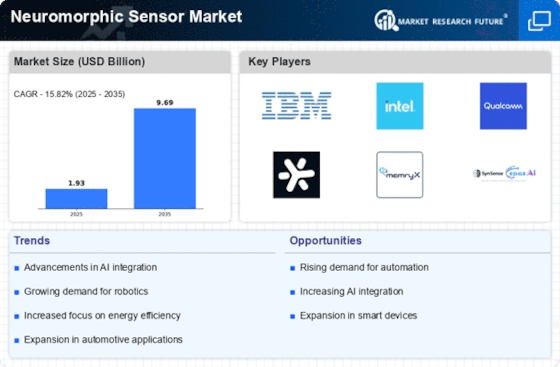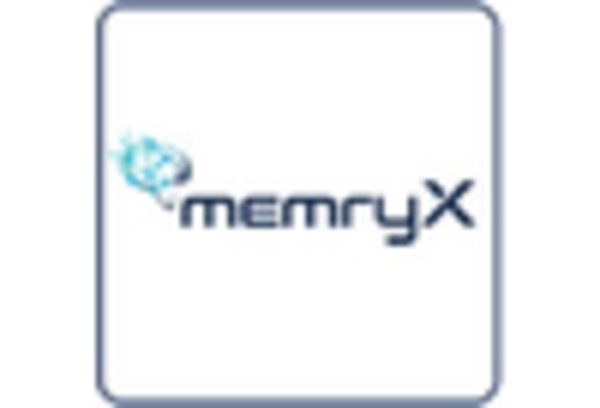Increased Focus on Smart Cities
The Neuromorphic Sensor Market is benefiting from the increased focus on smart city initiatives. As urban areas strive to become more efficient and sustainable, the integration of advanced sensor technologies is essential. Neuromorphic sensors can provide real-time data processing capabilities, which are crucial for managing urban infrastructure, traffic systems, and environmental monitoring. The smart city market is expected to reach USD 2 trillion by 2025, creating a substantial demand for innovative sensor solutions. This trend suggests that neuromorphic sensors will play a critical role in the development of smart cities, enhancing their operational efficiency and sustainability. Consequently, the Neuromorphic Sensor Market is likely to see significant growth as cities invest in smart technologies.
Emerging Applications in Healthcare
The Neuromorphic Sensor Market is experiencing growth due to emerging applications in healthcare. Neuromorphic sensors are being explored for their potential in medical diagnostics, patient monitoring, and wearable health devices. These sensors can process complex data streams in real-time, enabling more accurate and timely health assessments. The healthcare technology market is projected to reach USD 500 billion by 2025, indicating a robust opportunity for neuromorphic sensors. As healthcare providers seek innovative solutions to improve patient outcomes, the demand for advanced sensory technologies is likely to increase. This trend underscores the potential of the Neuromorphic Sensor Market to contribute significantly to advancements in healthcare.
Rising Demand for Energy Efficiency
The Neuromorphic Sensor Market is experiencing a notable surge in demand for energy-efficient solutions. As industries strive to reduce their carbon footprint, neuromorphic sensors, which mimic the human brain's processing capabilities, offer a promising alternative. These sensors consume significantly less power compared to traditional sensors, making them attractive for applications in various sectors, including automotive and consumer electronics. The market for energy-efficient sensors is projected to grow at a compound annual growth rate of approximately 20% over the next five years. This trend indicates a shift towards sustainable technologies, where neuromorphic sensors play a pivotal role in enhancing energy efficiency while maintaining high performance. Consequently, the Neuromorphic Sensor Market is likely to benefit from this growing emphasis on sustainability.
Advancements in Artificial Intelligence
The Neuromorphic Sensor Market is poised for growth due to the rapid advancements in artificial intelligence (AI). Neuromorphic sensors are designed to process information in a manner akin to human cognition, making them highly compatible with AI applications. As AI technologies continue to evolve, the integration of neuromorphic sensors into AI systems is becoming increasingly prevalent. This integration enhances the capabilities of AI, enabling more sophisticated data processing and decision-making. The market for AI-driven applications is expected to reach USD 190 billion by 2025, which could significantly bolster the demand for neuromorphic sensors. This synergy between AI and neuromorphic technology suggests a promising future for the Neuromorphic Sensor Market, as it aligns with the broader trends in intelligent systems.
Growing Interest in Robotics and Automation
The Neuromorphic Sensor Market is witnessing a growing interest in robotics and automation, which is driving demand for advanced sensory technologies. As industries increasingly adopt automation to enhance productivity and efficiency, the need for sensors that can process information in real-time becomes paramount. Neuromorphic sensors, with their ability to mimic human sensory processing, are particularly well-suited for robotic applications. The robotics market is projected to grow to USD 500 billion by 2030, indicating a substantial opportunity for neuromorphic sensors. This growth is likely to be fueled by the need for more intelligent and responsive robotic systems, thereby positioning the Neuromorphic Sensor Market as a key player in the automation landscape.

















Leave a Comment